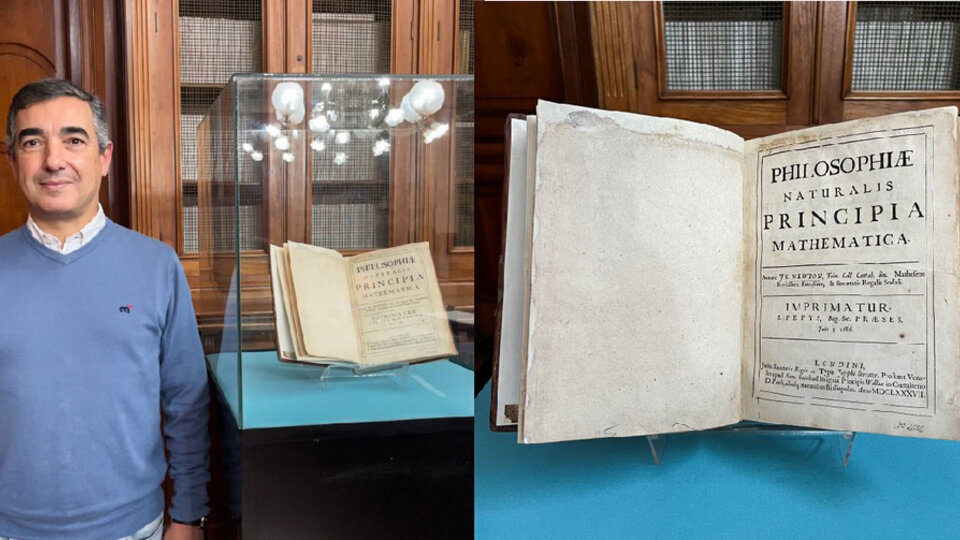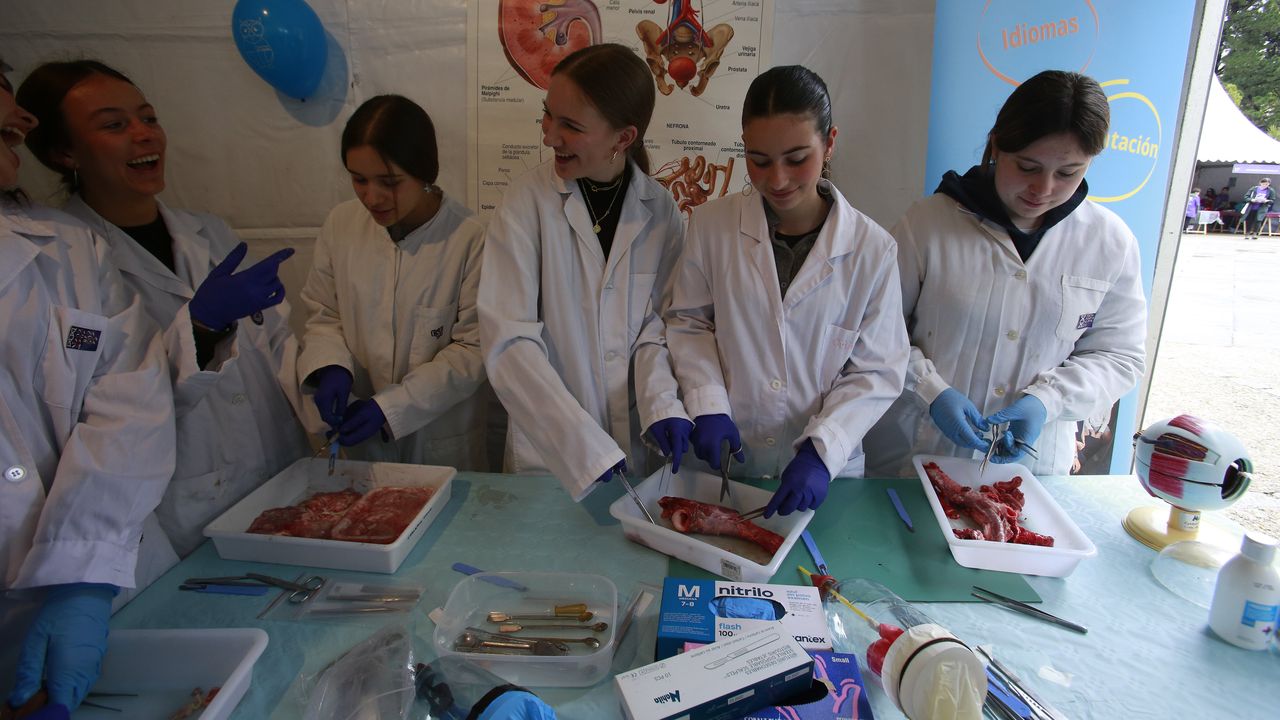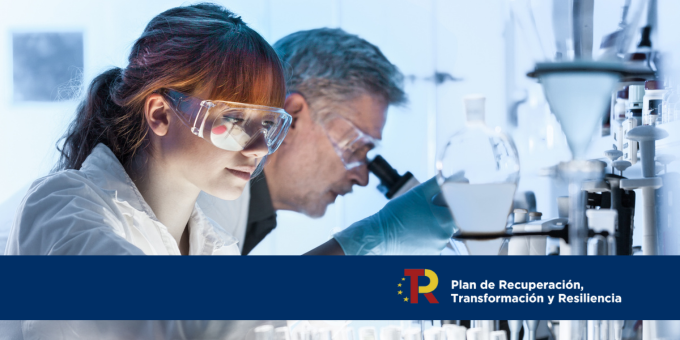In 1687, Isaac Newton wrote Philosophiae Naturalis Principia Mathematica, A book that many consider the beginning of modern science. Newton mentioned in that book the first three laws of motion and the general law of gravity. That is, theoretical support translated from the tale of the apple, well known by every boy and girl who went through elementary school. Einstein defined the book’s propositions as “the greatest step ever taken by a single person in knowledge.”
Each copy of this first book cost 9 shillings and was bound in calfskin. It was funded independently by astronomer Edmund Halley, a close friend of Newton’s, who corrected the manuscripts and was the one who persuaded him to publish his discoveries, thus changing history forever.
Although the exact number of copies printed of the first edition is not known, it is known how many copies remained: 387 distributed in 27 countries. One of these copies is located here, in the library of the Faculty of Astronomical and Geophysical Sciences of the National University of La Plata, and is the only copy in all of Latin America.
discovery
Although it was always known among university authorities that a valuable book was part of the library, it was Luis Guarcino, a CONICET researcher and professor in the School of Astronomical and Geophysical Sciences who discovered the true curiosity of the book. “One of the questions they always ask me when we put the book on public display is how many copies there are. So I started digging around and found an enumeration where all the editions out there were indexed, and ours didn’t. I wrote an email to the author of the survey and I remember that within five minutes I got Already on the man’s answer. They spent 10 years tracking books all over the world and didn’t find them,” says Lewis, who last month presented an investigation of the data they know each other from the book with colleagues Monica López-Durso, a museum scientist at the Museum of Astronomy and Geophysics FCAG-UNLP, and Stella Doggart, FCAG-UNLP Library Director.
Being able to trace back to the first editions of the book says a lot more than we think. Thanks to this kind of data, it is possible to learn more about how the ideas of modern science spread around the world. If earlier this knowledge could only be explored in the Northern Hemisphere, then thanks to this specimen it can be done in Latin America.
Despite the fact that the book is well preserved for being over three hundred years old, it was restored in 2011 by the laboratory of Nicholas Yapuguay, who belongs to the Jesuit organization Fondo Antiguo de la Cía. for Jesus. “Before the restoration, they put tape on it, and the pages were separated. In fact, when they cataloged it, they put a number written on it, which has some seals that look like Freemasonry from the first university, very old,” Lewis says.
Today, the book is very well protected, but once it was lost. Or rather, it was stolen by a professor at the university. What is not well known is how it was restored, and there are some legends about the university community. The most common is that the person stole the book, but confessed his sins to a priest who decided to return it. “The person who received it said it was a book with a lot of characters and drawings, so we don’t know if that was one or that,” Lewis says of the popular rumor.
But in addition to the anecdotes, the discovery value and current value of the book (which cannot be said for security reasons, but it suffices) that UNLP possess such an important book opens other questions: How did the book get there?
“I was telling the story that they all told us, the one that the book was supposed to have been part of the personal library of the first director of the Astronomical Observatory of La Plata, Francisco Pioff, at the end of the nineteenth century in the last century, the former director of the FCAG Museum, Sixto Jimenez Benitez, found A book from 1906 served as an inventory of the books, and it appeared there that the university had acquired the book,” Lewis says.
It is said about me
On November 10, 1906, Philosophiae Naturalis Principia Mathematica I got to college with other books. In addition, it had a label inside that was traced and matched to the London bookstore Wesley & Son, which specializes in astronomy books, which was active from the end of the nineteenth century to the beginning of the twentieth century. It is very likely that the specimen was purchased at a value close to 1 pound 10 shillings.
Many say that the date of purchase of the book occurred only one year after the establishment of the University of La Plata. “Let’s think that Argentina wasn’t even 100 years old. The foundations of something were laid, and we can see this initiative in the books they got. They weren’t just books, they were books of historical importance. Already at that time, this book was not the Doing research, because this knowledge was already universal. At that time the university had none. I think having these books was also a way of thinking about a university with solid scientific standards and base. I think there was an awareness of the value that this symbolic work had, And knowledge, science, at that time was closely linked to the idea of progress,” says Lewis.
Science has accompanied the city of La Plata from its very beginnings: the Astronomical Observatory was established in the same year as the city. As evidenced by its very special design, a city has been, since its founding, thinking in modern standards, organization and progress. In addition, it was one of the first cities in South America to have public electrical wiring. Therefore, we should not be surprised to see these scholars invest in the foundational book of modern science, which today can be enjoyed not only by the townspeople, but also by all of Latin America.
For everyone
The book is rarely shown due to its great value and age. But all those times he comes out of his safe is an event for the scientific community and fans of old books.
“There are people who come specifically to see it, or are touched by it. At The Night of the Museums, someone showed me that a version of the book had been tattooed, for example. A book is just a book, but if you know the story it’s very interesting to see Lewis concludes about the last time the book was shown.
In 2019, the university began a process of scanning its books into a digital format. Today, the only Latin American edition of the most important book on modern science is freely consultable on the Internet, at United Nations University Dissemination of Intellectual Creativity (SeDiCi) web page.





